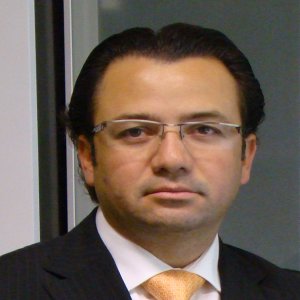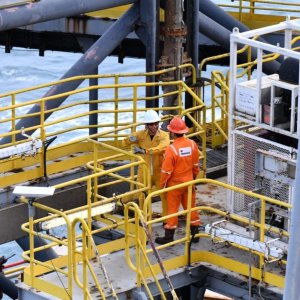Cooperation and Innovation at the Core of Production Enhancement

STORY INLINE POST
“Sinopec was one of the largest companies we went to visit and they had something to offer, so we decided that they would be a good partner for us,” says Luís Vázquez Sentíes, President of Grupo Diavaz. In 2006, the company started a joint venture with Chinese oil company Sinopec, known as DS Servicios Petroleros, in order to focus on opportunities in the Mexican market. Although Grupo Diavaz is the operator of the joint venture, the two companies own an equal share of the business.
In 2007, the group won a multiple service contract with Pemex Exploration & Production (PEP) that is considered by some to be Mexico’s first, albeit unoffcial, integrated service contract, focused on increasing production in the mature oil fields of the Ébano-Pánuco-Cacalilao sector, located in the states of San Luis Potosí and Veracruz. PEP announced that the contract would concentrate on re-evaluating reserves and designing alternative solutions to improve production of the fields in that region. The area includes one of the oldest oil fields in Mexico, where production began by foreign oil companies at the turn of the 20th century, before Pemex’s 1938 creation.
The joint venture’s operations formally started in March 2008. The plan for the project covered under the contract, as part of the overall development of the Ébano-PánucoCacalilao region, was to reach production levels of 6,000 bbl/day in 2008, and 12,000 bbl/day in 2012. In order to boost production, 120 new wells were drilled, and 420 existing wells were reactivated.
Vázquez Sentíes believes that to date the project has been very successful: after conducting seismic studies and exploratory drilling, the company was able to add significantly to the recoverable reserves in the ÉbanoPánuco-Cacalilao fields. “When we won the contract, we had reserves of 60 million barrels. Right now, there are 200 million barrels, a significant increase. The project has been very successful,” says Vázquez Sentíes. He adds that this increase in reserves meant that there was much more work to look forward to than expected.
“The only thing that it changed was that with a previous reserve level of 60 million barrels we had not planned to engage in much drilling. The project would have been six slow years of production before finishing,” Vázquez Sentíes says, “But with the new levels of reserves we are going to do a lot more work and are increasing the production significantly.” Although the original contract was changed to accommodate this extra work, Vázquez Sentíes explained that it remained largely the same.
According to statistics from the CNH, oil production in the Ébano-Pánuco-Cacalilao sector has increased significantly in recent years. This is largely due to work done at the Ébano field, where monthly oil production went from 1,300 bbl/day in March 2008 to 4,800 bbl/day in September 2011.
The partnership between Grupo Diavaz and Sinopec has also been satisfying, from the Mexico-based group’s viewpoint. As a first time operator, Grupo Diavaz had the opportunity to gain experience, while Sinopec could profit from being part of a project in Mexico. “We learned a lot and so did they,” Grupo Diavaz’s President affrms. “We have two meetings every year in China, and Sinopec regularly travels to Mexico as well. We have a good relationship and are doing well together.”
DS Servicios Petroleros is able to take advantage of Sinopec’s experience and is allowed to use many of its methodologies and techniques developed for crude oil exploitation. The joint venture company has contracted the services of several third-party companies in order to provide the project with the technologies it needs to reach its effciency and productivity goals. Among the contractors was Geo Estratos, a Mexican company with strong roots in the region, which made its offer more attractive by offering free exploration services. “Our solutions have contributed to a more than threefold increase in recoverable reserves, which brings additional economic benefits to the region as oil production increases,” explains Vicente González Dávila, Director General of Geo Estratos. “The information we have collected in the process has allowed us to continuously improve our processes and develop a technology platform that addresses the specific challenges associated with heavy oil production in this region. In turn, the combination of new technological development and favourable results from our free exploration services led to more of our services being contracted by DS Servicios Petroleros.”
Currently, Geo Estratos is contracted to offer a portfolio of services including telemetry, well stimulations using the company’s proprietary Viscosity Bio Reducer, and solutions for the internal cleaning of pipelines. “Today, we complete more than 400 well stimulations a year in these fields,” says González Dávila. In fields where wells produce as little as 5 bbl/day, low-cost solutions to optimize production are essential. Increasing production by 5 bbl/day, which implies doubling production, has an enormous impact on the profitability and sustainability of these fields. “This project is illustrative of our commitment to developing and implementing technological and operational solutions that improve the return on investment in mature heavy oil fields, and offers Pemex and its contractors solutions to select the most appropriate technologies maximizing return through increased production while minimizing investment.”
As the joint venture in the Ébano–Pánuco-Cacalilao area has progressed well, Grupo Diavaz and Sinopec have expanded their project scope together by starting work on a new project at Chicontepec. Asked about the similarities between the Ebáno-Pánuco-Cacalilao sector and Chicontepec, Vázquez Sentíes is quick to say that there are few similarities. “It has a completely different formation. Chicontepec has low permeability, whilst the permeability of the Ebáno-Pánuco-Cacalilao sector is much higher,” he explains
The project is focused on water injection and will benefit from Sinopec’s expertise in this area. “Sinopec has very good water injection technology,” says Luís Vázquez Sentíes. “In the near future, we will start the test phase at the site to ensure that the method Sinopec is proposing - which we think is going to work - will actually work.” Vázquez Sentíes points out that Grupo Diavaz executives have visited the project in China where the technology is currently being used successfully. If the test in Chicontepec produces good results, the technique might be used in other areas of the sector. “I think it will take about ten months to see if the test works, “ explains Vázquez Sentíes. “If it does, then we are going to try do the same with further oil areas in Chicontepec.”





















